
Howell Trevor Pugh, known as H. T. Pugh, was a stonemason who was trained in Wales and worked primarily in Jerome, Idaho. His high quality work popularized the use of lava rock in the Jerome area, eventually including for fine residences in town. More than 20 of his works are preserved and are listed on the National Register of Historic Places.

The James Bothwell Water Tank House is a water tank house located on a farm 3.25 miles (5.23 km) north of Jerome, Idaho. The building was constructed circa 1926 for James Bothwell, a local lawyer and farmland investor. Bothwell built the tank house and a well on the property to help provide water for the farm. The building was constructed with lava rock by stonemason John Gott, who was trained in Germany. It is one of two original rock water tank houses remaining in Jerome and Lincoln Counties.
The Hugh and Susie Goff House is a historic house located in Jerome, Idaho.
The Bert and Fay Havens House is a historic house in Hazelton, Idaho. It listed on the National Register of Historic Places on September 8, 1983, as part of a group of structures built from local lava rock in south central Idaho.
The Edward M. Gregg Farm is a historic farm located near Jerome, Idaho. The property includes a farmhouse, bunk house, well house, barn, and chicken house. The buildings were built with lava rock, a popular building material in south central Idaho in the late nineteenth and early twentieth centuries. The one-story house was built in 1914 for Edward M. Gregg, and the remaining buildings were added over the next two decades. The early 1930s well house was designed by local stonemason H.T. Pugh.
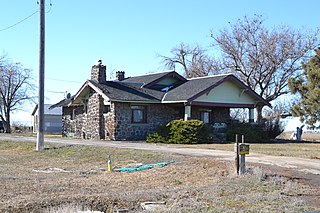
The Charles C. Vineyard House is a historic house located in Eden, Idaho.

Ignacio Ygnatil Berriochoa was a skilled stonemason in Lincoln County, Idaho. He was born in the Basque region of Spain and moved to Idaho in 1904. He lived in Shoshone, Idaho from 1910 to 1949 where he was a farmer and sheepman. A number of his works are listed on the U.S. National Register of Historic Places.
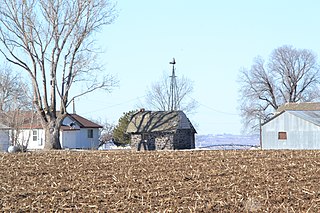
The William H. Cook Water Tank House is a water tank house located southeast of Jerome, Idaho, United States. The building was constructed circa 1915 and was used to store water for William H. Cook's farm. The rectangular building was constructed with lava rock and contains a metal tank. Although the stone craftsmanship in the building is similar to the work of local stonemason H. T. Pugh, the builder of the house has not been determined.
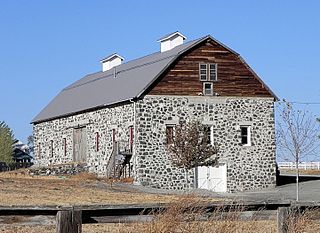
The Jacob B. Van Wagener Barn is lava rock structure built in 1912. It located in Jerome, Idaho, United States, and was listed on the National Register of Historic Places in 1983.
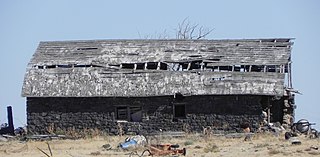
The Manuel Silva Barn near Shoshone, Idaho, United States, was built in 1910 by stonemason Ignacio Berriochoa, who lived about 2 miles (3.2 km) away. It was listed on the National Register of Historic Places (NRHP) in 1983.

The Denton J. Paul Water Tank near Dietrich, Idaho, United States, was built in c.1918, perhaps by stonemason Ignacio Berriochoa and his helper Julian Pagoaga; Berriochoa lived about three miles away. It was listed on the National Register of Historic Places in 1983.
William Lindsey Darrah was a sheep rancher and stonemason in Shoshone, Idaho known for his construction of lava rock water tanks from the 1910s to 1920s. He built water tanks ranging from approximately eight to 30 feet high and from 12 to 25 feet in diameter. His tanks were typically built with a stone foundation several feet into the ground. The walls were approximately three feet wide and built out of lava stones and lime mortar. Darrah's tanks were typically accompanied by one-story pump houses
The Darrah House and Water Tank House, near Shoshone, Idaho, were built in 1913 by sheep rancher and stonemason Bill Darrah. They was listed on the National Register of Historic Places in 1983. The listing included two contributing buildings on 5 acres (2.0 ha).
The Ben Darrah Water Tank and Well House near Shoshone, Idaho, United States, were built in c. 1916 by stonemason Bill Darrah. They were listed on the National Register of Historic Places in 1983; the listing included two contributing buildings on 1.3 acres (0.53 ha).
The Thomas Gooding Water Tank House near Shoshone, Idaho, United States, is an elevated water tank structure that was built of stone in 1919 by sheep rancher and stonemason Bill Darrah. It was built for Thomas Gooding. The elevated water tank is supported on five I-beams. It is a 20-foot (6.1 m) tall 12-foot (3.7 m) diameter structure. Originally a windmill was atop the structure to lift the water, but is no longer present.
The Louis Johnson Water Tank House near Richfield, Idaho, United States, is believed to have been built in the 1910s by sheep rancher and stonemason Bill Darrah. It was listed on the National Register of Historic Places in 1983.
The Arthur D. Silva Water Tank near Shoshone, Idaho, United States, was built in 1910. It was a work of sheep rancher and stonemason Bill Darrah and of stonemasons Pete Duffy & Sons. It was listed on the National Register of Historic Places in 1983.
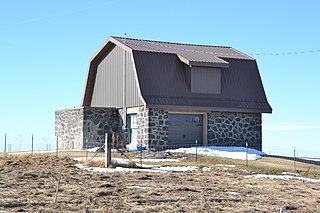
The Heuer Well House/Water Tank, located northeast of Jerome, Idaho, is a lava rock house with joined water tank which was built in 1929 by stonemason H.T. Pugh and Ed Bennett. It was listed on the National Register of Historic Places in 1983.
The Ben Laughlin Water Tank House-Garage, near Jerome, Idaho, was built in 1927. It was listed on the National Register of Historic Places in 1983.

Priestly's Hydraulic Ram, located in Gooding County, Idaho near Hagerman, Idaho, was a hydraulic ram invented and built c. 1890. It was used to move water uphill to irrigate agricultural land on the plateau above the Snake River. It was located about 6 miles (9.7 km) south of Hagerman at Thousand Springs. The area is now Thousand Springs State Park. It was listed on the National Register of Historic Places (NRHP) in 1975.











